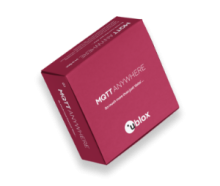
MQTT Anywhere
IoT Communication-as-a-Service SIM-based LPWA
IoT service delivery platform
Thingstream is the u-blox service delivery platform for:
Thingstream is a cloud-based delivery platform and administration interface for enterprise IoT services. The Thingstream platform comprises IoT connectivity, security, enterprise-grade MQTT broker, visual programming, simple enterprise integration, and support for u-blox global positioning hardware.
Managed services:
Bearer-agnostic connectivity and management for cellular, LoRaWAN, and IP-based IoT devices.
Find out more about IoT Communication-as-a-Service
Improving accuracy and providing increased location reliability and enhanced GNSS positioning indoors.
Find out more about IoT Location-as-a-Service
For information on u‑blox Services pricing, please see our pricing page.
For plans and pricing, see individual service pages: